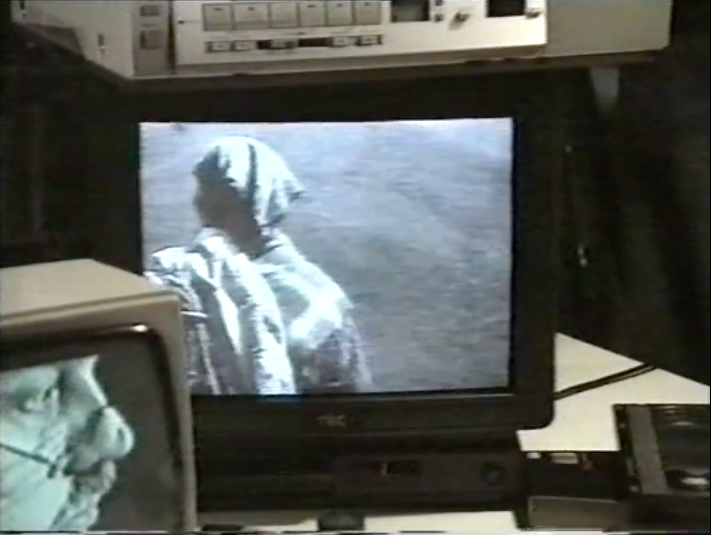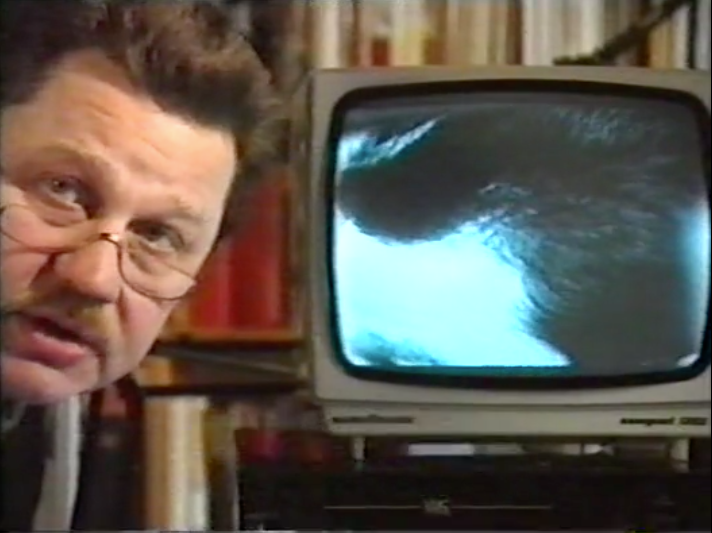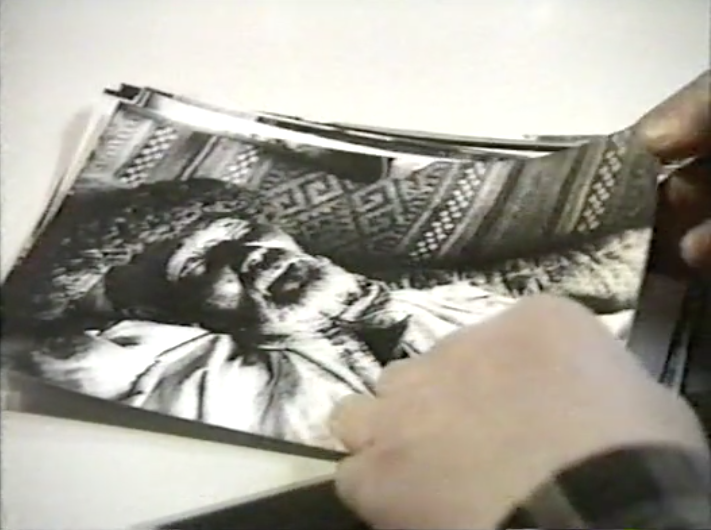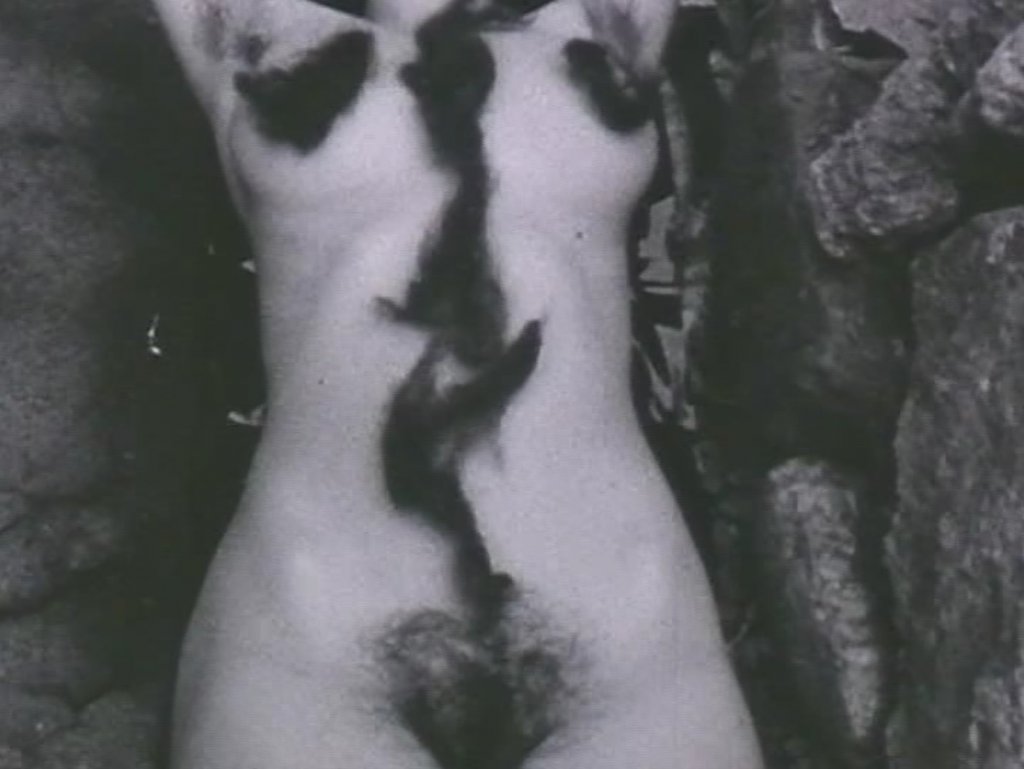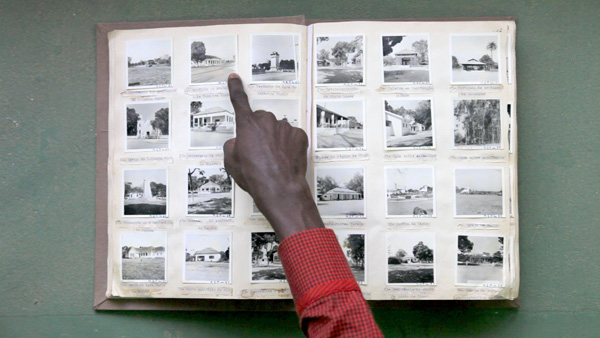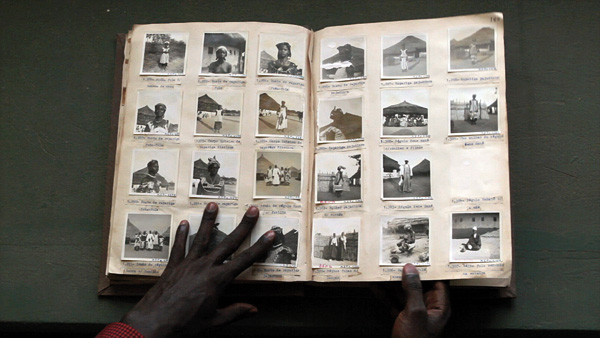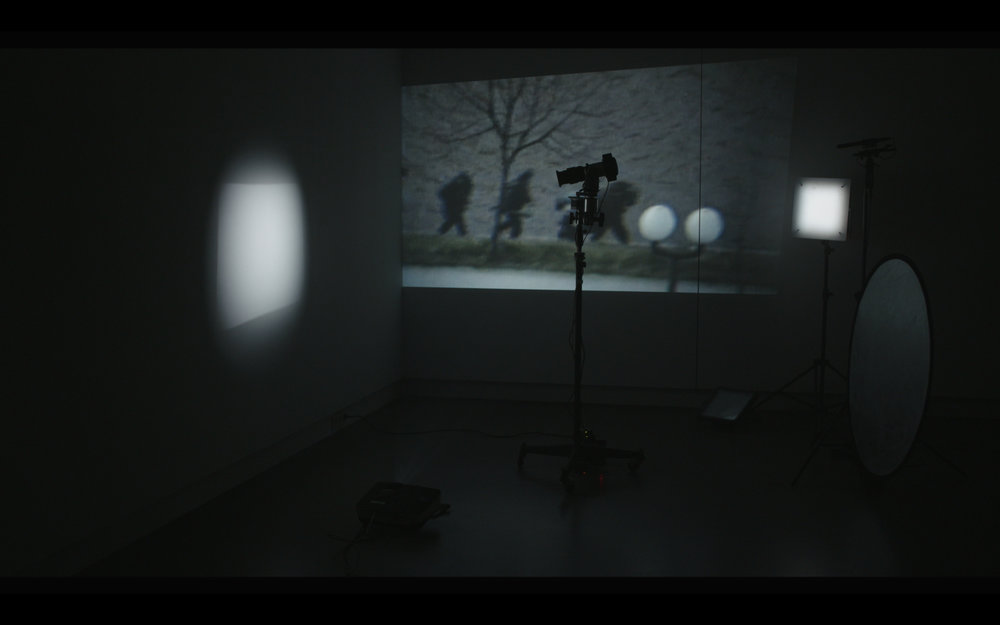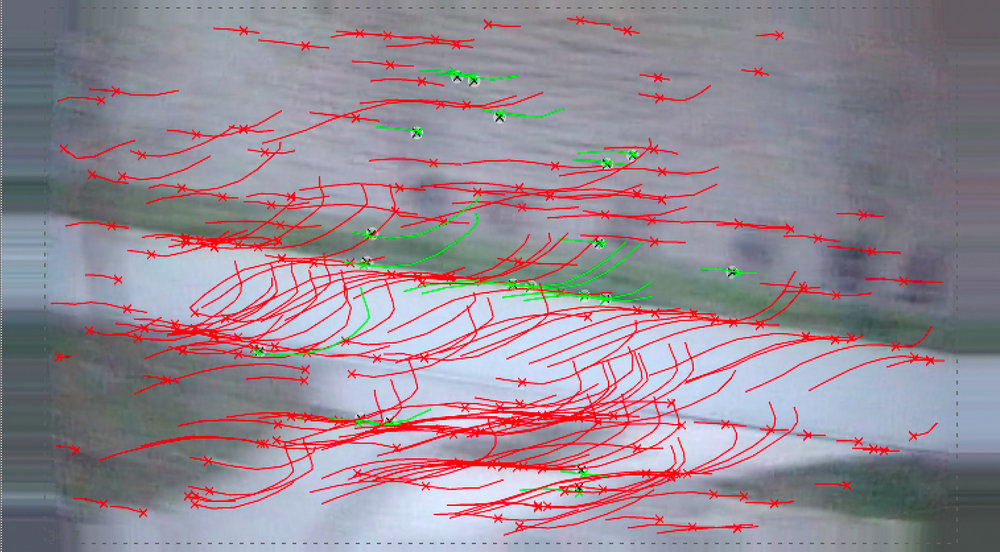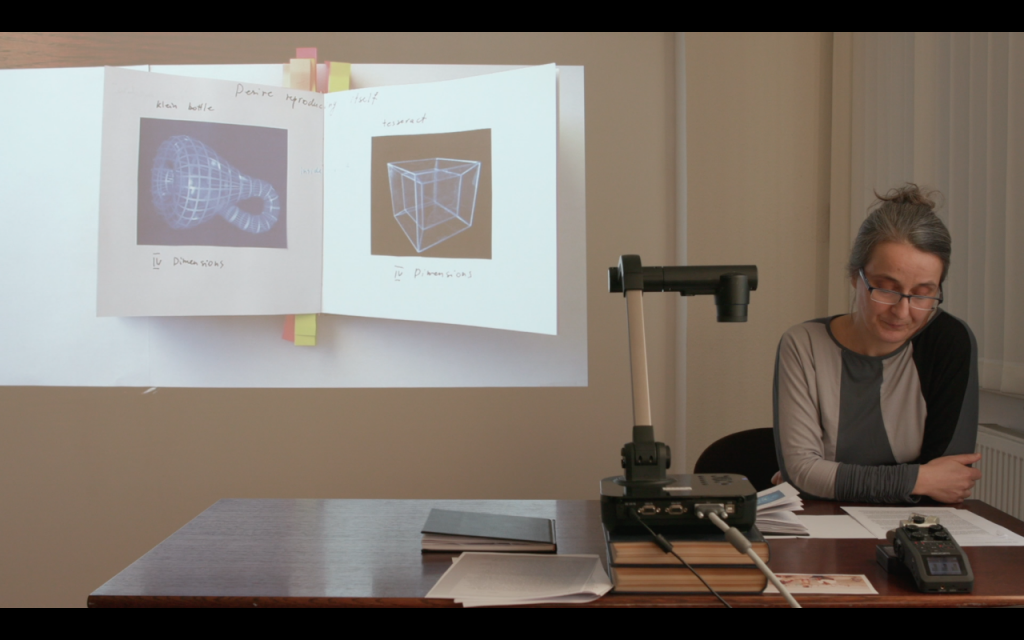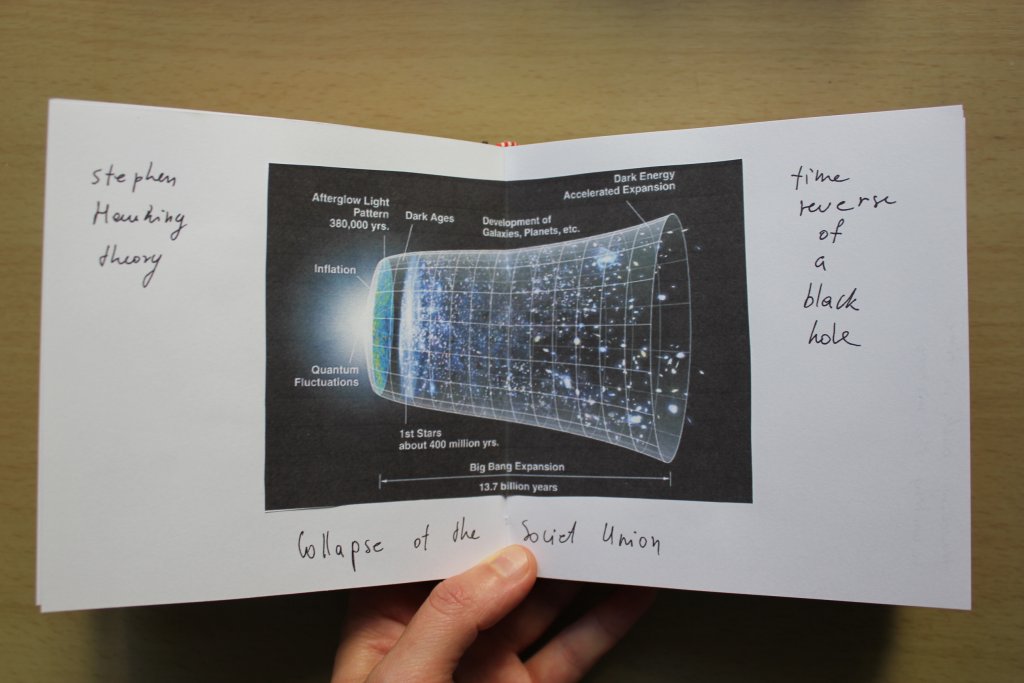The 1960s are generally considered to be a time of change in the cinematic history, whereas the contemporaneous innovation attempts of radio play are less known. Ludwig Harig, versatile author and representative of concrete poetry, was one of their most formative protagonists with his technique of alienated original sound collage.
STATE FUNERAL I
Director: Johann M. Kamps , Sound and Technics: Eduard Kramer, Marlies Mathis, Adeltraut Schumann, Production: SR/WDR 1969, 63′
On 19 April 1967, Konrad Adenauer dies. From 33 hours of ARD’s tape recordings of accompanying coverages and live broadcasting, Harig collages a “documentary satire” in which the cited original material is transformed “without vulgar ’manipulation’ but through condensation, reduction, repetition into a comedy of language” (Jörg Drews). Aired in 1969, STATE FUNERAL I (1969) was temporarily banned from broadcasting and publication.
18 April, 6-11 pm & 19 – 21 April, 4-11 pm – Schaubühne Lindenfels
respectively as part of the exhibition – Free entrance
A FLOWERPIECE
Composition: Wolfgang Wölfer, Director: Hans Bernd Müller, With Günther Sauer, Joachim Nottke, Charles Wirths, Ensemble: Zürcher Kammersprechchor and the Kinderfunkensemble Christa Frischkorn, Production: SR/HR/SDR/SWF 1968, 53′
A FLOWERPIECE is the associatively disturbing merger of German nursery rhymes and fairy tale verses with diary notes of Auschwitz commander Rudolf Höß. The martial character of the seemingly harmless body of song becomes as much pointedly tangible In the overlapping sound and music levels as the outrageous juxtaposition of beauty of nature and the most conceivably horrid descriptions by Höß. Harig tackles a subject that has faced the problem of (artistic) portrayal like no other in an approach decidedly sceptical of representation. Furthermore, he does it to not “let the dust settle on the ramp” as in Höß’ account.
17 April, 6 pm – Luru Kino at the Spinnerei – Free entrance
Both radio plays in German
Cinema and Wind and Photography (D 1991, Hartmut Bitomsky) / Spare Time (UK 1939, Humphrey Jennings)
CINEMA AND WIND AND PHOTOGRAPHY
D 1991, D: Hartmut Bitomsky, 56′, German OV, DigiBeta
SPARE TIME
UK 1939, D: Humphrey Jennings, 15′, English OV, 16mm
How should one define the relationship of documentary film to reality? Does it aim at authenticity or is it rather an “exile of reality”, a “foreign homeland of reality”, where the pre-filmic, stripped of its immediacy, comes to its own right in the first place? Where in its mis-en-scène would be the line drawn to a fictional film, if drawing a line would succeed at all?
These are the kind of questions this film essay on the history and aesthetics of documentary film deals with in its seven chapters, its form decidedly incorporating the open motion of the quest. It is not about assigning rights or wrongs to individual protagonists or theorists of documentary film. Emphasised is the indecisive, ongoing dialogue with their ideas – in a kind of spatial experimental setup. We observe how Hartmut Bitomsky and his staff in turn watch films and relate them to each other. They are shown in a workspace equipped with several monitors and VHS recorders, theory books are piled up, now and then videocassettes with the next film examples are picked out and stage directions are being given. The intrinsic aesthetic value of the samples becomes secondary, what matters is the visual and ideational mediation work. For example, sequences of Humphrey Jennings’ SPARE TIME undergo an aestehtic translation. Following Bitomsky’s film, it will be shown in its entirety – what is stressed in the work of reference, what is left out?
[Working on the image | Insights into the work of Hartmut Bitomsky]
17 April, 9 pm – Luru Kino at the Spinnerei – € 6,5 (5,5 red.)
The authority of traditional archives regulates and controls history’s reproduction and defines cultural and collective memory. Archives arrange, classify, pass down, generate knowledge and establish the way in which everyone speaks about the past. We are about the points where these operating principles break open or are affirmed with a subversive intention, where seemingly known things are told or restaged in a new way. The artists taking part in the exhibition work in an associative field of narration, politics of memory and processes of identity formation. Their diverse artistic methods appropriate content of existing archives, revise it, deconstruct it or relate it to their own material, thereby filling the gaps which are produced by archives’ constitutive exclusion mechanisms.
Filipa César for example refers to the Portuguese colonial power’s occupation of Guinea-Bissau and, indirectly, to the war which ended it, saturated with violence, lasting eleven years (1963-1974). Within a much larger project, in which César deals with the revolutionary and inflammatory practice of film making in Guinea-Bissau, THE EMBASSY developed, which shows a photo album from a national archive. This album, filmed in a one take shot with fixed camera, is flicked through and commented on. Armando Lona, journalist and archivist, establishes the connection between past – the point of view, the photo inventory and the order of the colonialists – and present of the west African state.
CAN’T YOU SEE THEM? – REPEAT is the result of long-time research in and artistic involvement with the Library Hamdija Kresevljakovic – Video Archive, a collection of private videos produced during the siege of Sarajevo (1992-1995) showing the internal perspective of the then trapped inhabitants. Basis of Clarissa Thieme’s installation is the recording of stooped paramilitaries seeking the protection of a dam. The filming person is seized by the situation’s threat, his or her hand is not able to work steadily. Thieme tracked the shaking motion, which hardly catches the events taking place in front of the camera, and fed the gained data into a motion-control system. This system allows for a projector installed on a tripod to exactly carry out the original movement. Solely, the image is without content, the feeling abstracted and translated into pure motion.
Furthermore, we want to present methods and contents of existing archives as institutional practices of “Becoming-Archives“: ex.oriente.lux by Claus Löser and Karin Fritsche (21 April at 7 pm) as well as re.act.feminism (18 April at 9.30 pm). These and additional examples of engaged, critical and activist archival work, alongside the positions shown in the exhibition, serve as point of departure for our panel discussion at 20 April at 6 pm. Moderated by film critic Dennis Vetter, film historian Heide Schlüpmann, media professor Simon Rothöhler and filmmaker Gabriele Stötzer discuss the aspects of an “Archival work from below“. What kind of importance can be attributed to such counter-archives? In what sense can conservation and preservation of material and the concurrent wish for public accessibility and processuality be thought together and in what ways can they complement each other? How can archival practice become a possibility of initiating a dialogue? What factors allow an archive to be thought of as a continuous motion that not only drafts narratives retrospectively and enshrines history, but holds a potential for shaping the present?
Exhibition: 18 – 21 April – Schaubühne Lindenfels – Free entrance
| Thu, 18.4 Schaubühne | |
| 6 PM | Opening of Exhibition |
| until 12 PM | Exhibition |
| 7 PM | Lecture-Performance by Nadia Tsulukidze Big Bang Backwards 2018, 50’, in englischer Sprache |
| 8:30 PM | re.act.feminism #2 – a performing archive, 2011-2014 Lecture by Beatrice Ellen Stammer on the “wandering archive” re.act.feminism (in German) |
| Fri, 19.4 Schaubühne | |
| 4 – 12 PM | Exhibition |
| 7 PM | Lecture by Natascha Frankenberg Watermelon Woman |
| Sat, 20.4 Schaubühne | |
| 4 – 12 PM | Exhibition |
| 6 PM | Panel Discussion |
| Sun, 21.4 Schaubühne | |
| 4 – 12 PM | Exhibition |
| 5 PM | Gabriele Stötzer and Claus Löser in Conversation |
Works i.a.
18 April, Opening at 6 pm
19 – 21 April, from 4 to 12 pm
BIG BANG BACKWARDS
Lecture-Performance / Video | Nadia Tsulukidze, 2018, 50′
THE EMBASSY
Video | Filipa César, 2012, 37′
CAN’T YOU SEE THEM? – REPEAT.
Installation with film (8′) / light projecting motion-control-system „CYST“ / Alu Dibon photo print | Clarissa Thieme, 2019
STAATSBEGRÄBNIS I
Radio play | German language, Ludwig Harig, 1969, 64′
TRISAL (and additional works)
Video | Gabriele Stötzer, 1986, 20′
GEMEINSAM UNERTRÄGLICH – EIN DOKUMENTARISCHES MOSAIK
Radio play | German language, Ernest Ah, Sabrina Saase and Lee Stevens from Kollektiv der Raumerweiterungshalle, 2018, 60′
Lecture performance by Nadia Tsulukidze, 2018, 50′, in English
Within the frame of the project “wildes wiederholen”, Nadia Tsulukidze has embarked on the tracks of dissident actress, directress and author Freya Klier. “Big Bang Backwards“ originated, a lecture performance that combines documental testimonials of oppositionist Klier coming from the archive of GDR opposition, with fictive letters and personal experience of the artist herself. Tsulukidze attentively flips through an album, comments on sketches, photographs, handwritten notes. Formally, it is a journal that in its actual shape is laid out as an internal monologue connecting author and addressee. Here, the journal as artistic practice becomes an intersubjective space of reflection: the existence of an usually non-present audience opens up new perspectives on the (archive) material. Simultaneously, the multifaceted overlay creates a political resonance chamber where narrative structures of a documentary frame are questioned, and further also the interpretation of material and the indivdual’s role in it. Without ever coming into actual contact with Klier or having ever seen a picture of her, the idea of her as a counterpart develops into a reality and gives way to a distinct narrative practice.
Nadia Tsulukidze was born in Tbilisi, Georgia, in 1976. She grew up there, studied violin and subsequently, eurythmy in Stuttgart. Upon her return to Georgia, she founded Khinkali Juice in 2005, a multimedia performance collective that realized various productions internationally. Tsulukidze finished her master programme at DasArts in Amsterdam in 2010 and lives in Berlin by now.
18 April, 7 pm – Schaubühne Lindenfels – Free entrance
originated from:
re.act.feminism – performance art of the 60s and 70s today, 2008-2009
Lecture by Beatrice Ellen Stammer on the “wandering archive” re.act.feminism (in German)
“performing archive” has two different sides: one the one hand, focusing its content on the queer-feminist video and performance art of the 1960s and 1970s, on the other hand, the archive itself is arranged as a performance. Being a so-called “wandering archive“, it breaks with institutionalised spatialities of classical archives. International collaborations with artists, artist collectives, universities and academies formed a collection which toured Europe for almost two years between 2011 and 2013. More than 200 artists as well as artist collectives from two generations are part of the project. The fundamental idea is a processual one, for changing the terms of archives’ accessibilities allows a shift of perspectives, enabling new readings and alternative interpretations of materials.
“re.act.feminism #2 – a performing archive” seeks to “widen the view beyond the canon of the known and inscribed to uncover the range and complexity of performative strategies“. Beatrice Ellen Strammer will present the project, which she curated together with Bettina Knaup, showing several exemplary film excerpts.
18 April, 9.30 pm – Schaubühne Lindenfels – free entrance


